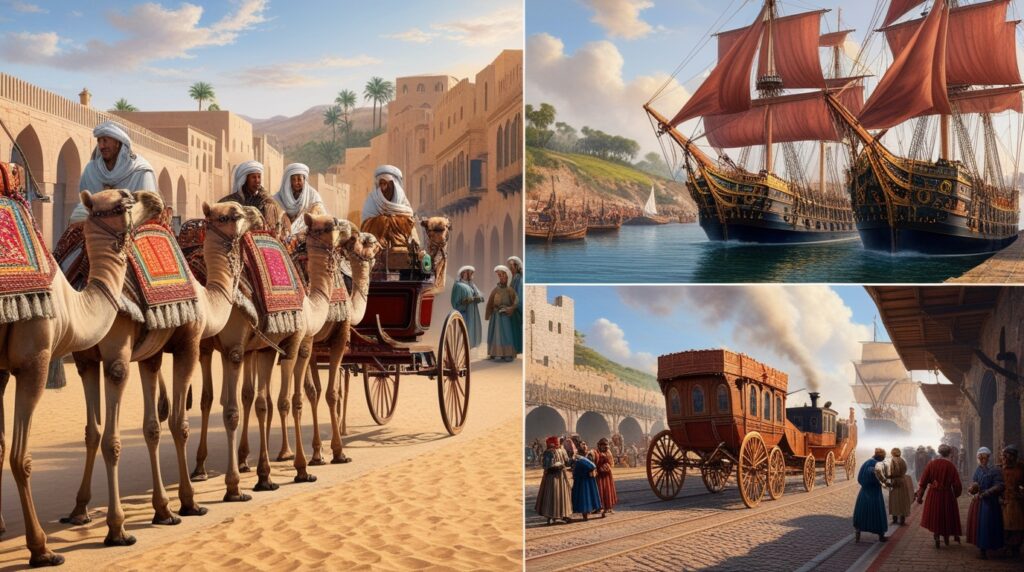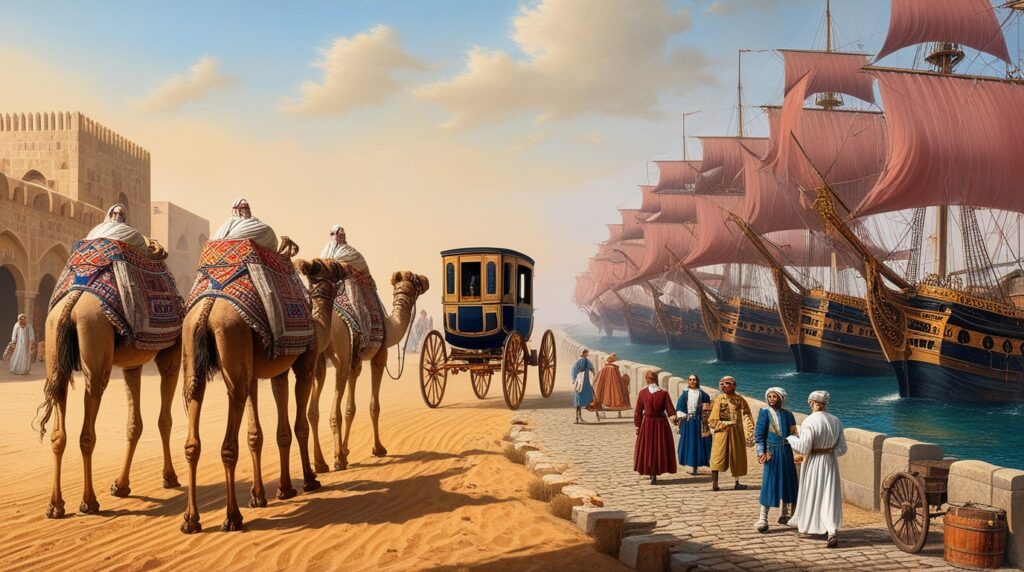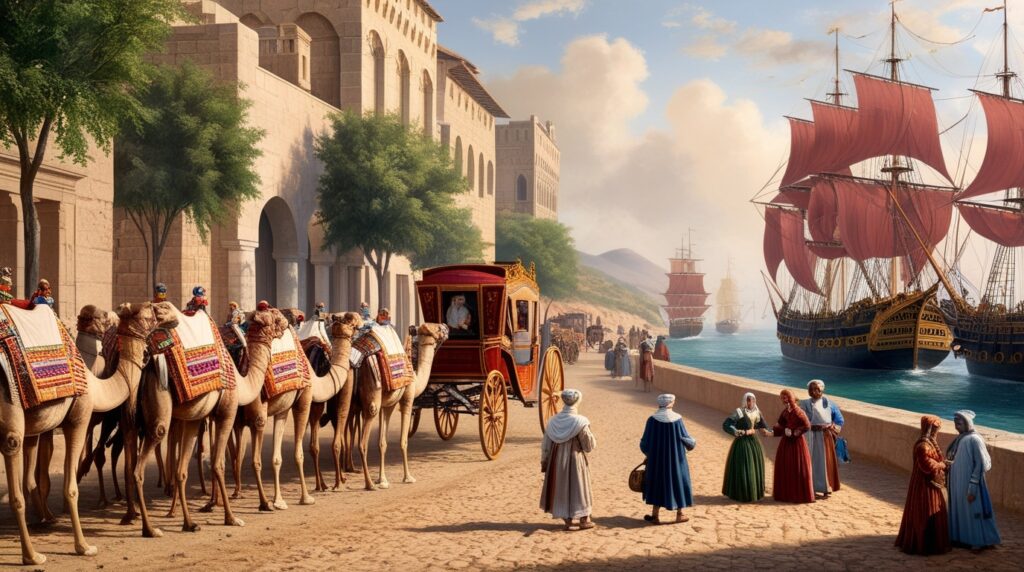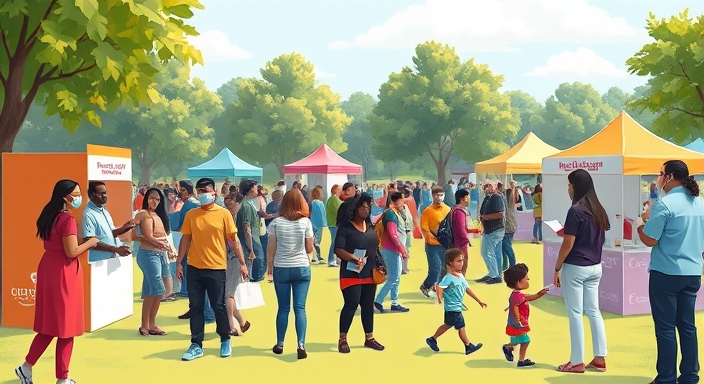
Transportation has been a cornerstone of human civilization, evolving over centuries to meet the demands of trade, communication, and exploration. Understanding old modes of transportation gives us a glimpse into the ingenuity of our ancestors and the foundations of modern mobility.
Ancient Modes of Transportation
Early humans relied on their physical capabilities to travel on foot, often covering vast distances to hunt and gather food. With the domestication of animals, transportation took a significant leap forward. Horses, camels, and oxen became vital for carrying goods and people, enabling the growth of ancient trade routes like the Silk Road.
The Invention of the Wheel

The invention of the wheel around 3500 BC was a revolutionary moment in human history. Carts and wagons made it easier to transport heavy loads over long distances. Civilizations such as the Mesopotamians and Egyptians used wheeled chariots for agriculture, trade, and even warfare.
Water Transportation
Rivers and seas were essential for connecting distant lands. Ancient Egyptians built reed boats to navigate the Nile, while the Phoenicians and Greeks developed advanced sailing ships for trade and exploration. The invention of oared galleys and later sails revolutionized maritime transport.
Railroads and Steam Power
The Industrial Revolution brought the advent of railroads, marking a turning point in transportation history. Steam-powered locomotives enabled faster and more reliable movement of goods and people across countries. This innovation not only boosted economies but also transformed societal structures.
The Age of Horse-Drawn Carriages
In urban settings, horse-drawn carriages and stagecoaches became the primary mode of travel during the 17th and 18th centuries. These vehicles allowed for more comfortable journeys and facilitated postal services, helping to connect cities and rural areas.
Legacy and Significance

Old modes of transportation laid the groundwork for modern systems. They highlight the adaptability and creativity of humanity in overcoming geographic and technological challenges. Preserving and studying these ancient methods provides valuable insights into our collective history.







Прокат подъёмников с подачей на торговый центр или склад — Узнайте больше информации <a href=
https://msk.spravka.city/company/dom-podyoma
Аренда спецтехники для монтажа рекламных щитов и конструкций — Подробности по ссылке <a href=
https://www.orgpage.ru/moskva/dom-podema-6195105.html
Профессиональный ремонт генераторов любой сложности, смотрите подробнее <a href=
https://www.sitelike.org/similar/serviceset.ru/
Простое начало большого выигрыша — мелстрой казино регистрация по ссылке https://mellstroy.icu
Рекомендую проверенный ресурс мелстрой казино официальный сайт https://mellstroy.icu
Попробуйте удачу и получите приятный подарок на меллстрой казино бонус https://mellstroy.icu
Ощутите лучшие ощущения с эромассаж питер <a href=
https://spb.erobodio.ru/
Ищите проверенное место эротический массаж спб частные заведения здесь <a href=
https://spb.erobodio.ru/
Профессиональный интим массаж в вашем районе <a href=
https://spb.erobodio.ru/
Узнал много полезного о современных умных часах и браслетах, подробнее здесь <a href=
https://doc.aquilenet.fr/s/1OM1y2B2e
Услуги по стяжке пола и машинной штукатурке с профоборудованием, переходите <a href=
https://sites-reviews.com/ru/bauputz.ru
Подшипники для различных отраслей промышленности, подробности тут <a href=
http://orgi.biz/org_podsnab
Рекомендую обратить внимание — отличное решение для лечения зависимостей, подробнее здесь <a href=
https://telegra.ph/Kvinmed–kompleksnoe-lechenie-zavisimostej-i-podderzhka-vosstanovleniya-11-07
Полезный ресурс для тех, кто ищет надёжные часы и браслеты для самоконтроля <a href=
https://www.minimum-price.ru/discussions/user/372374/
Лучшие девушки для теплого общения и встреч, подробнее тут зрелые проститутки
Натуральные сыры и творог оптом напрямую с завода, отличное качество <a href=
https://www.minimum-price.ru/discussions/user/372136/
Отличный вариант для тех, кто ищет надежное лечение зависимостей, вот ссылка <a href=
https://otzovik.online/katalog/zdorove/kvinmed/
Оптовые поставки сельхозпродукции по ценам от производителя, информация <a href=
https://www.blurb.com/user/tveragroprom?profile_preview=true
Рекомендую аренду яхт для стильного отдыха, все подробности здесь <a href=
https://faststart.ru/cat.php?action=more&id=698482
Здесь сочетают медицину и психологию для эффективного лечения, узнай больше <a href=
https://print-info.ru/users/1324
Агропромышленный комплекс с современными хранилищами и технологиями <a href=
https://www.bondhuplus.com/tveragroprom99
Идеально для празднования дня рождения на яхте, подробности здесь <a href=
https://prlog.ru/analysis/podmoskovnaya-riviera.ru
Удобные условия аренды яхт, все подробности по ссылке <a href=
https://www.topsitessearch.com/dubai-riviera.com/
Отличные отзывы и высокое качество, рассмотрите Dreams Store <a href=
https://orgzz.ru/msk/co/dreams_store/3870272
Рефрижераторные контейнеры для хранения и перевозки с контролем температуры — узнайте все детали <a href=
https://lyubimiigorod.ru/moscow/pZkFzSchuj
Подбирали материалы для творчества — нашли отличный вариант, смотрите тут <a href=
https://otzovik.online/katalog/tovary/eliqua/
Остекление мансардных помещений и чердаков — Ознакомьтесь с деталями <a href=
https://spb.tradedir.ru/comp/c642562-okonnyj_zavod_ooo.htm
Лучшие решения по корпусной мебели предлагает фабрика, подробнее здесь <a href=
https://www.recenziya24.ru/company-637/
Нужно что-то для художественных изделий? Загляните — информация здесь <a href=
https://guides.co/a/eliqua
Устранение масложора, задиров и перегрева в двигателях Hyundai и Kia — Подробности по ссылке <a href=
https://www.klerk.ru/user/2614334/
Для электротехнических задач нашли подходящий вариант, переходите сюда <a href=
https://guides.co/a/amarid-electro
Услуги остекления с оплатой по факту — Ознакомьтесь с деталями <a href=
https://spb.spravka.city/company/osteklenie-spb
Unique jewelry crafted from prehistoric materials — timeless and rare, discover more <a href=
https://www.noifias.it/Artefactum
Мобильные кассы для выездной торговли и курьеров, дополнительная информация тут <a href=
https://msk.yp.ru/detail/id/posbazar_kompaniya_4541918/
Игровые автоматы vodka помогут выиграть крутые призы <a href=
https://vodkabet.ink
Custom decor featuring real fossils and artefacts — one-of-a-kind accents, check details <a href=
https://www.deviantart.com/artefactumg
Автоматизация торговли с помощью решений на базе 1С и iiko, подробная информация тут <a href=
https://www.recenziya24.ru/company-638/
Активируй промокод Сайка и выиграй больше с каждой ставкой <a href=
https://syyka-games.fit
Испытай удачу с игровыми автоматами Syyyka в любое время <a href=
https://syyka-games.fit
Готовые комплекты POS-оборудования для заведений общепита под ключ, подробности по ссылке <a href=
http://www.advertology.ru/index.php?name=Account&op=userinfo&username=Posbazarspb
Рекомендую подрядчика по промышленным полимерным полам, подробнее здесь <a href=
http://www.advertology.ru/index.php?name=Account&op=userinfo&username=Sergei771
Организация уборки, ремонта и безопасности объектов недвижимости без лишних хлопот <a href=
https://orgzz.ru/spb/co/alyans_prof/2309433
Качественная уборка офисов и помещений — их профиль, смотрите <a href=
https://www.sitelike.org/similar/cleanprosto.ru/
Поставка термопринтеров чеков и этикеток по выгодным ценам, ознакомьтесь с деталями <a href=
https://guides.co/g/3606-84885/690900
Специализируются на наливных полах для складов и цехов, смотрите здесь <a href=
https://giphy.com/channel/grandpolymer99
Профессиональная организация частных и корпоративных мероприятий в Москве, подробнее тут https://drinkio70.ru/
Взломостойкие и антивандальные конструкции повышенной прочности — подробная информация здесь <a href=
https://123ru.market/items/proizvodstvo_metallicheskih_dverey_59110
Компания с большим опытом и положительными отзывами, подробнее тут <a href=
https://moskvakatalog.ru/stroitelnye-kompanii/77552/
Проверенное зеркало для входа без проблем, вход онион <a href=
https://onion-games.fit/
Энергосберегающие окна ПВХ с установкой под ключ, ознакомьтесь подробнее <a href=
http://www.advertology.ru/index.php?name=Account&op=userinfo&username=Gleb7881
Изготовление нестандартных входных металлических дверей по индивидуальным размерам – узнайте подробности здесь <a href=
https://gvozd.org/report-show/dverimetallv.ru
Разработка сайтов с интеграцией CRM и системами учёта, подробная информация <a href=
https://follow.it/managing-information-overload-smart-filtering-for-modern-content-consumers?pub
Лучшее оборудование для предприятий общественного питания по выгодной цене <a href=
https://www.orgpage.ru/moskva/kobor-treyd-6197460.html
Миграция существующих сайтов на платформу 1С-Битрикс, подробнее тут <a href=
https://giphy.com/channel/wrp2025
Лучшие девушки для теплого общения и встреч, подробнее тут зрелые проститутки новосибирск
Нужна техпомощь и эвакуация в любое время суток? Доступные цены и быстрый отклик тут <a href=
https://devpost.com/evacuator-absolut?ref_content=user-portfolio&ref_feature=portfolio&ref_medium=global-nav
Доставка осуществляется по всей территории России быстро и надежно <a href=
https://moskvakatalog.ru/internet-magazini/77601/?sphrase_id=177257
Лучшие решения для праздничных и новогодних корпоративных подарков <a href=
https://rank.ru/ru/www/xn—-7sbbgletfkh2aiaghhick4a6q.xn--p1acf
Пара простых шагов до успешной регистрации joycasino <a href=
https://joy-games.space/
Creative themed event experiences in Dubai (Fantasy, Time Machine, etc.) — find out more here <a href=
https://topsitenet.com/startpage/sevenae/1505768/
Поиск и доставка нужного вам товара из Китая под заказ — Узнайте подробности здесь <a href=
https://sinmeng.inni.info/
Для надёжной игры выбираю официальный сайт джойказино <a href=
https://joycasino-now.space/
Лучше всего открывать через рабочее зеркало джой казино <a href=
https://joycasino-now.space/
Компактные и мобильные сварочные станции – Читайте подробнее <a href=
https://n2j7k.mssg.me/
Профессиональная поддержка в получении разрешений для медучреждений, здесь <a href=
https://flashboot.ru/profile/licenzpro99/
Весёлые персонажи, шуточные сценки, юмор и море смеха в духе советской комедии — Читайте подробнее <a href=
https://qiita.com/7Dreams
Краткие сроки лечения и индивидуальный подход в нашей ортодонтической клинике <a href=
https://www.rabota.ru/company/stomatologicheskaya-klinika-ortolayk2/
Для получения лицензии под ключ с гарантией результата, подробнее здесь <a href=
http://www.advertology.ru/index.php?name=Account&op=userinfo&username=Valeria1992
Страхование и безопасная доставка грузов из Китая — Узнайте больше информации <a href=
https://pastelink.net/5gqqoiud
Здесь можно быстро пройти регистрацию пинко <a href=
https://pinco-now.space/
Качественное оборудование для энергоснабжения предлагают специалисты, подробности по ссылке <a href=
https://teletype.in/@rensol
SEO продвижение сайта с анализом конкурентов и ключевых слов <a href=
https://upuge.com/seomaster12345
Подготовка допечатных материалов — читайте полное описание <a href=
https://lookingforclan.com/user/printnow
Доставка пробных партий товаров из Китая для теста продаж — Узнайте больше информации <a href=
https://otzovik.online/katalog/kompanii/ooo-sinmeng/
SEO аудит и продвижение сайта с регулярной отчетностью <a href=
https://protocol.ooo/en/users/seomaster12345
Печать газет и периодики — ознакомьтесь с деталями <a href=
https://500px.com/p/nptspb2025?view=photos
Профессиональный монтаж автономных систем канализации под ключ, подробнее <a href=
https://hedgedoc.eclair.ec-lyon.fr/s/jREF9lHhW
Быстрый запуск и продвижение сайта для новых проектов <a href=
https://www.blurb.com/user/seomaster987?profile_preview=true